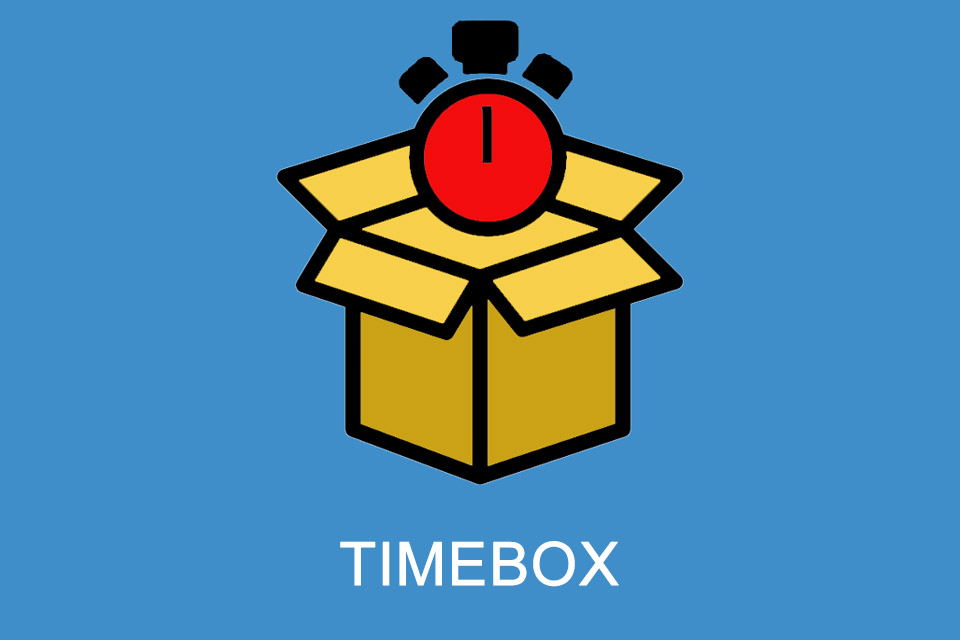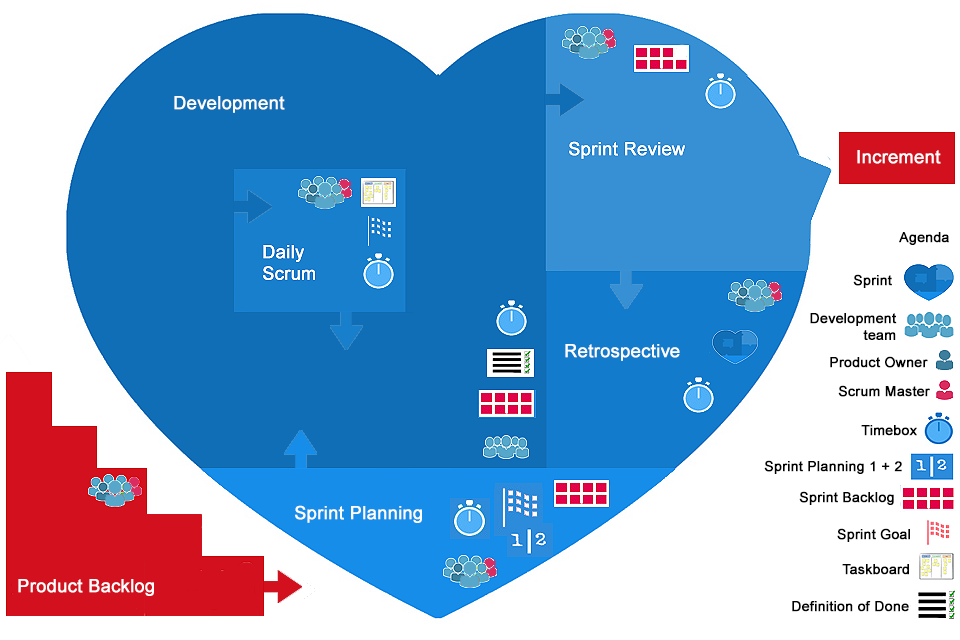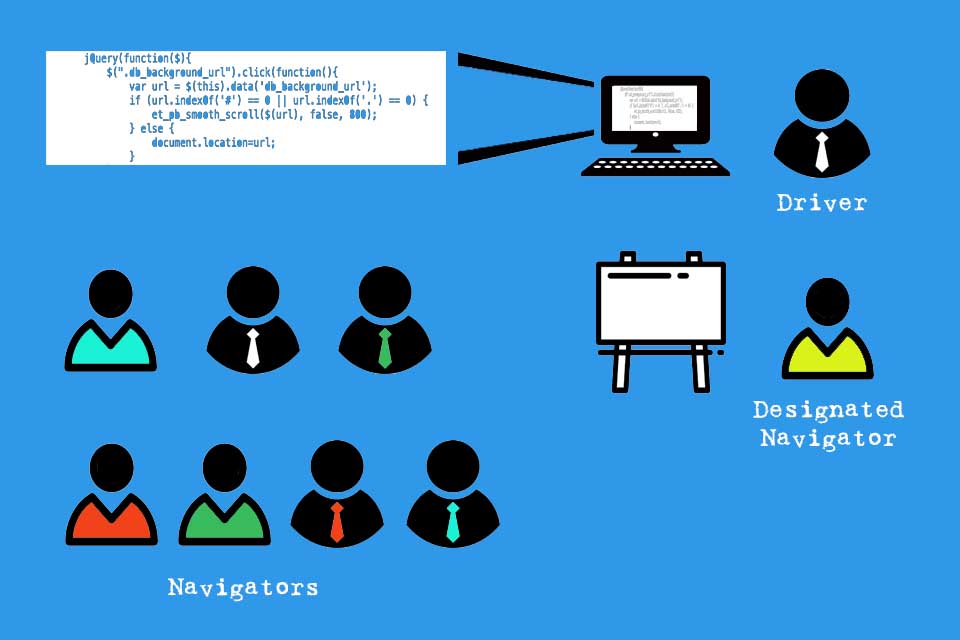What is a Timebox?
Smartpedia: Timeboxing is a technique for the planning and time limitation of projects and activities, which gives more weight to the time factor than to the resources and quality factors.
Timeboxing definition
Timeboxing is a technique for scheduling projects, processes and activities. It defines a time frame and weights the time factor higher than the resources and content factors.
In contrast to classical project management with the definition of work packages and the fixation of services to be performed, a timebox defines the duration and time frame for a job. In order to meet the specified time frame, contents and volumes can change in the course of a timebox. Processes are thus terminated after a defined duration at a defined point in time, even if not all planned contents of the process could be realised. Unimplemented content is moved to subsequent timeboxes or deleted if necessary on the basis of new findings. The great advantage of timeboxing is that it supports planning, even if companies operate in a dynamic environment and desired results cannot always be specified in advance and completely.
Duration and determination of a timebox
The purpose of timeboxing is to set and limit times for projects, processes and activities. It is important to determine the duration of a timebox in a meaningful way. While too short periods can make the development of useful intermediate results more difficult, too long periods may increase the risk of undesirable developments with changing goals, requirements or boundary conditions. Here it is advisable to work together in a team to define a timebox that is suitable for the organisation, the working method and the project object.
Differences between timebox and deadline
There are three main differences between a deadline and a timebox:
- A deadline is not set by a development team – i.e. from within an organisation – but mostly from outside, e.g. by a client.
- A deadline is a period of time during which a service must be provided by a fixed date, otherwise there is a risk of consequences. Timeboxing is an attempt to complete a large number of tasks within a given, jointly agreed timeframe without the risk of consequences.
- The mindset is different. When working with deadlines, the power lies with the client, when working with timeboxes in a team.
Timeboxing as a central technique in Scrum
Timeboxing is a central technique in Scrum. It is part of the Sprint Planning as well as the Sprint itself, it is used in the Daily Scrums, the Sprint Review and the Sprint Retrospective. There are even organisations where timeboxing is used not only for sprints, but even within individual sprints, e.g. to eliminate ambiguities, to conduct research or when working with spike stories. An important thought in timeboxing is the clear definition of done, through which content that does not meet all acceptance and completion criteria will be handled in future timeboxes. In addition, working with timeboxing teams also encourages them to get down to work as quickly as possible, as this gives them early feedback and allows them to quickly adapt delivery items accordingly.
Timebox in sprint planning
Before a team can start development, it must plan it. This planning meeting is called sprint planning. The Scrum Guide recommends a timebox for sprint planning of 8 hours or less for a one-month sprint. The shorter the sprint, the shorter the time frame for sprint planning should be. For a one-week sprint, 2 hours or less would be appropriate.
Timebox during sprint
The realisation of requirements takes place in Scrum during the sprints. In contrast to a classic iteration, sprints with a maximum duration of one month are very short. Which timebox is best for a company cannot be answered generally. When determining the timebox, companies can orient themselves on the planned total duration of the development, the corporate culture and/or the development object.
Timebox in Daily Scrum
Communication is very important in Scrum – not only between stakeholders and the product owner, but also within development. That’s why the Scrum team comes together at the beginning of a working day for a Daily Scrum. The Daily Scrum is a 15-minute timebox in which the team synchronises activities, discusses obstacles to achieving goals and discusses upcoming tasks.
Timebox in sprint review
At the end of a Sprint, the Scrum team demonstrates and discusses its results and checks whether the desired goals have been achieved. Stakeholders also provide feedback. The Product Owner and the developers then revise the Product Backlog. For one-month sprints a timebox of 4 hours or less is recommended for a sprint review, for a three-week sprint 3 hours or less, etc.
Timebox in retrospective
At the end of the sprint, the Scrum team conducts a retrospective under the moderation of the Scrum Master. The aim of the retrospective is to identify suggestions for improving cooperation in order to implement them in the next sprint. For a one-month sprint, the timebox is 3 hours or less.
Timebox in backlog refinement
The backlog refinement is not an official event of Scrum, but the Scrum Guide describes the implementation of a Refinement as a continuous task in which the Product Owner and the Scrum Team cooperate. Basically the participation of the Scrum Master is also recommended, because he can make sure that the timebox is adhered to. In the Scrum Guide 2020 there is no recommendation for the timebox at the Backlog Refinement; in the previous version it said “no more than 10% of the capacity of the Development Team”.
Timeboxing and conventional project planning
There are many companies that are active in regulated industries such as medical technology, pharmaceuticals, aerospace, transportation or the automotive industry. How can these companies reconcile timeboxing and classic project planning? There are several options. For example, classical work packages could be defined in such a way that their internal structures do not influence each other, because in this way work package A could be planned conventionally and work package B via timebox. Or companies could simply define milestones for intermediate results in a classic schedule, and the project manager would synchronise with development via product backlogs, release and sprint planning, and sprint reviews.
Advantages and disadvantages of timeboxing
Timeboxing can offer the following advantages:
- It encourages focus on what is important – provided all parties understand and respect the meaning.
- It helps to set a work-in-progress limit.
- It promotes consistent prioritisation of activities.
- It initiates progress tracking.
- It helps in stopping unnecessary perfectionism.
- And it helps improve forecasting ability.
In contrast, the following disadvantages could arise with timeboxing:
- It creates a permanent feeling of stress, especially since activities should basically take as long as necessary, but no longer.
- It promotes the prioritisation of urgent over important activities.
- It leads to visibility being prioritised over reliability.
- It prevents people from reflecting on their activities and actions in peace.
- It motivates getting things done rather than reviewing them.
- And it makes predictable work look better than innovative work.
There are even opinions that see no benefits at all in timeboxing and instead consider the technique a reason for low quality, waste and rework, especially as it prevents deep discussions and consensus building.
Small conclusion: A technique like timeboxing does not automatically have to be advantageous or disadvantageous, it depends on the concrete application, the context and the intended and actual effect.
Small tip: As a tool for the effective creation or delivery of valuable increments or products, timeboxing should be questioned again and again – for example, in the course of retrospectives.
Impulse to discuss
The great advantage of timeboxing is the focus on essentials. However, this presupposes that all those involved understand the meaning of the timebox and respect it accordingly. Is this the case in your organisation?
Is it possible to empirically prove the effectiveness of timeboxing?
Notes:
If you like the article or would like to discuss it, please feel free to share it in your network. And if you have any comments, please do not hesitate to send us a message.
Timeboxing is also used in the Scrum of Scrums. Since the Scrum Guide 2020 does not make any statements about scaling, there are no corresponding specifications. Organisations should therefore define their own guidelines.
Timeboxing can be found in many situations in life: at school when writing dictations, during speed dating or during discount campaigns that end at a defined time.
Here you will find an online tool with which you can set individual timings.
Here you will find additional information from our Smartpedia section:




